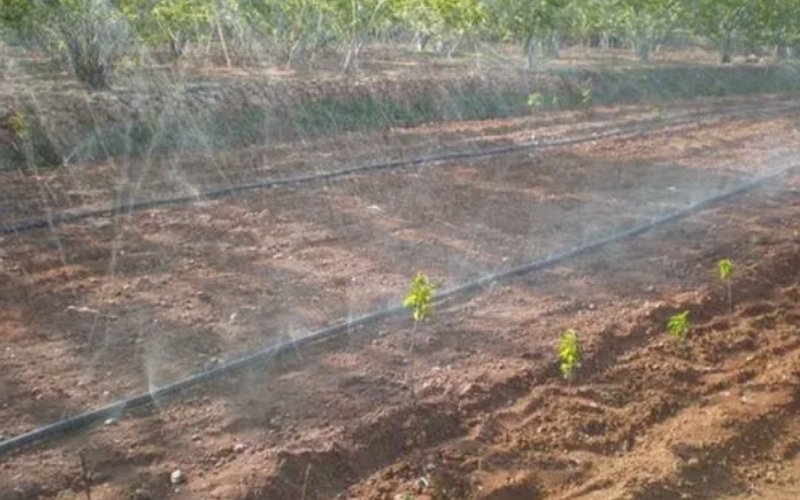
The main difference between a sprinkler belt and a drip irrigation belt lies in their methods of water delivery and the specific applications they are designed for. Here are the key distinctions:
Sprinkler Belt:
A sprinkler belt is a type of irrigation system that uses a flexible hose or tube with evenly spaced sprinkler heads or nozzles along its length. When water is supplied to the belt, the sprinkler heads spray water in a circular pattern, covering a larger area. The water is distributed over the plants or crops in a manner similar to rainfall. Sprinkler belts are suitable for irrigating larger areas, such as agricultural fields, lawns, or gardens.
Key features of sprinkler belts:
1. Water delivery: Sprinkler belts spray water in a wide arc, covering a larger area with each sprinkler head.
2. Distribution pattern: Water is distributed in a circular pattern, similar to rainfall.
3. Coverage area: Sprinkler belts are designed to irrigate larger areas efficiently.
4. Water consumption: Sprinkler belts generally use more water compared to drip irrigation systems.
5. Application: Suitable for watering lawns, gardens, agricultural fields, and other large-scale applications.

Drip Irrigation Belt:
A drip irrigation belt, also known as a drip tape or drip line, is a narrow tube with pre-installed drippers or emitters spaced at regular intervals along its length. The drippers release water slowly and directly into the soil near the plants' root zones. Drip irrigation provides a precise and localized water supply, minimizing water waste and optimizing water efficiency. Drip irrigation belts are commonly used in agriculture, horticulture, and gardening.
Key features of drip irrigation belts:
1. Water delivery: Drip irrigation belts deliver water directly to the plant roots, minimizing evaporation and water loss.
2. Distribution pattern: Water is released through individual drippers or emitters, providing precise and localized irrigation.
3. Coverage area: Drip irrigation belts are suitable for row crops, garden beds, or individual plants.
4. Water consumption: Drip irrigation belts are highly water-efficient, as they deliver water directly to the plant root zones, reducing water waste.
5. Application: Ideal for conserving water and delivering precise irrigation to specific plants or crops.
Overall, sprinkler belts are designed for larger-scale irrigation, providing broader coverage and simulating rainfall, while drip irrigation belts are focused on water efficiency, delivering water directly to plant roots with minimal waste. The choice between the two depends on factors such as the size of the area to be irrigated, the type of crops or plants, and the desired water efficiency.